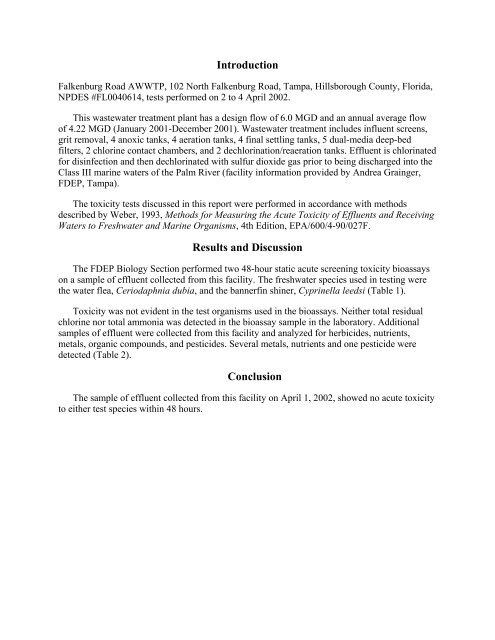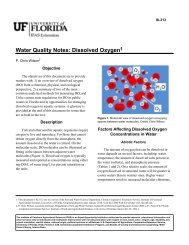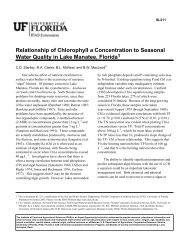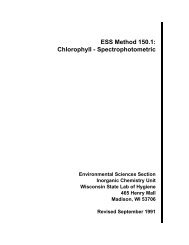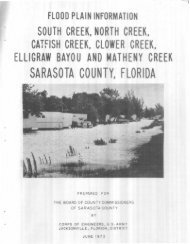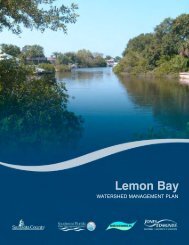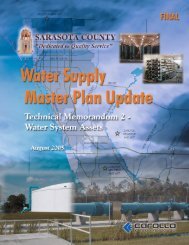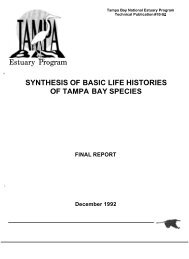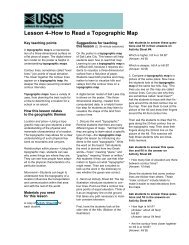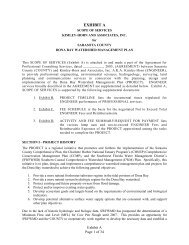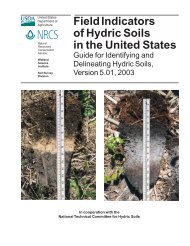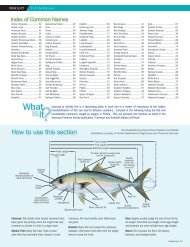Bioassays of Falkenburg Road Advanced Wastewater Treatment Plant
Bioassays of Falkenburg Road Advanced Wastewater Treatment Plant
Bioassays of Falkenburg Road Advanced Wastewater Treatment Plant
Create successful ePaper yourself
Turn your PDF publications into a flip-book with our unique Google optimized e-Paper software.
Introduction<strong>Falkenburg</strong> <strong>Road</strong> AWWTP, 102 North <strong>Falkenburg</strong> <strong>Road</strong>, Tampa, Hillsborough County, Florida,NPDES #FL0040614, tests performed on 2 to 4 April 2002.This wastewater treatment plant has a design flow <strong>of</strong> 6.0 MGD and an annual average flow<strong>of</strong> 4.22 MGD (January 2001-December 2001). <strong>Wastewater</strong> treatment includes influent screens,grit removal, 4 anoxic tanks, 4 aeration tanks, 4 final settling tanks, 5 dual-media deep-bedfilters, 2 chlorine contact chambers, and 2 dechlorination/reaeration tanks. Effluent is chlorinatedfor disinfection and then dechlorinated with sulfur dioxide gas prior to being discharged into theClass III marine waters <strong>of</strong> the Palm River (facility information provided by Andrea Grainger,FDEP, Tampa).The toxicity tests discussed in this report were performed in accordance with methodsdescribed by Weber, 1993, Methods for Measuring the Acute Toxicity <strong>of</strong> Effluents and ReceivingWaters to Freshwater and Marine Organisms, 4th Edition, EPA/600/4-90/027F.Results and DiscussionThe FDEP Biology Section performed two 48-hour static acute screening toxicity bioassayson a sample <strong>of</strong> effluent collected from this facility. The freshwater species used in testing werethe water flea, Ceriodaphnia dubia, and the bannerfin shiner, Cyprinella leedsi (Table 1).Toxicity was not evident in the test organisms used in the bioassays. Neither total residualchlorine nor total ammonia was detected in the bioassay sample in the laboratory. Additionalsamples <strong>of</strong> effluent were collected from this facility and analyzed for herbicides, nutrients,metals, organic compounds, and pesticides. Several metals, nutrients and one pesticide weredetected (Table 2).ConclusionThe sample <strong>of</strong> effluent collected from this facility on April 1, 2002, showed no acute toxicityto either test species within 48 hours.


